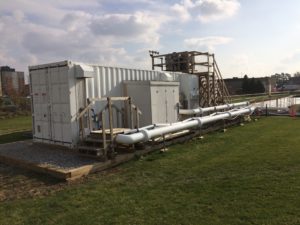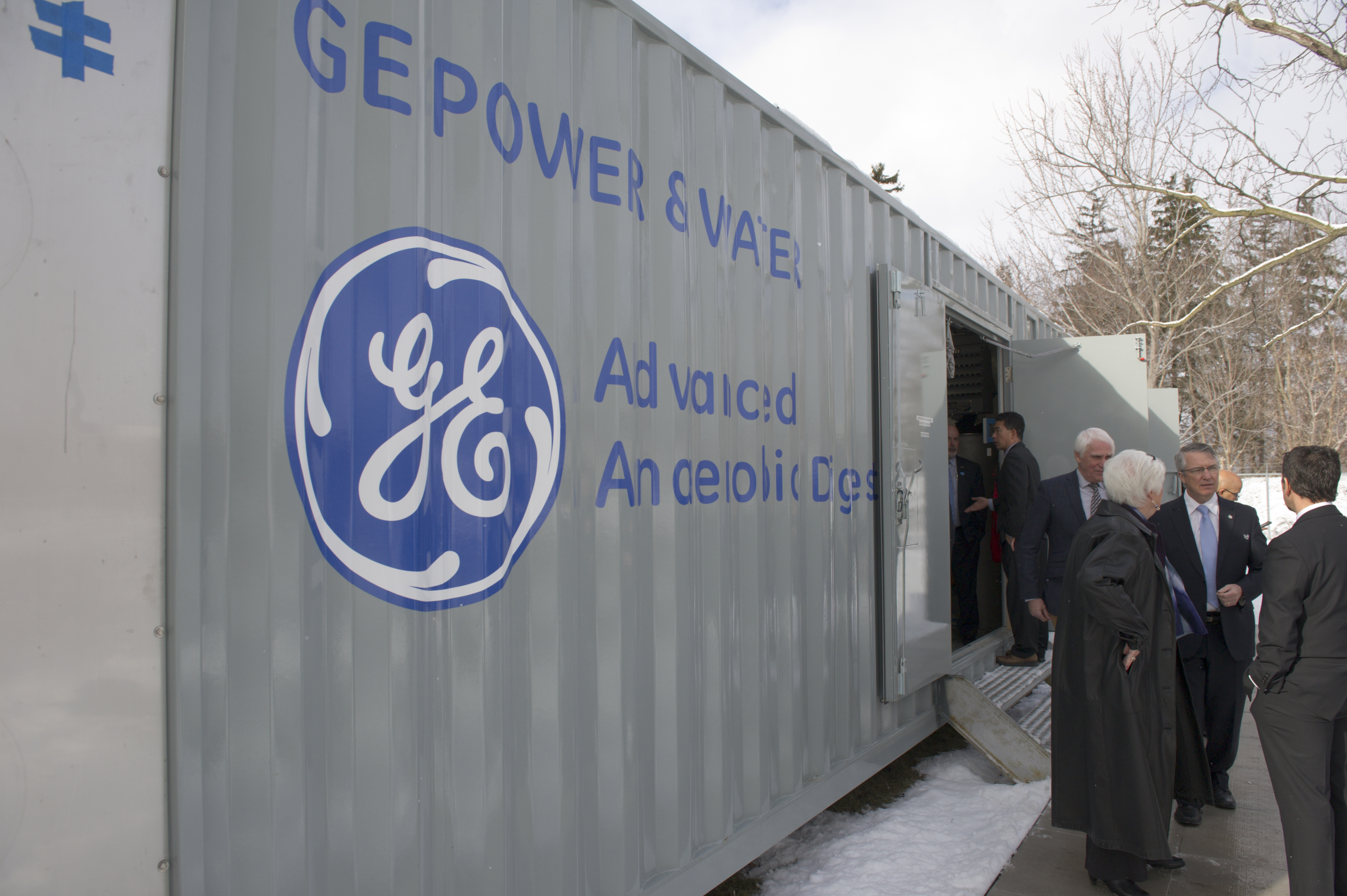Wastewater treatment facilities protect neighbouring watersheds from harm, but often with a high price in terms of energy usage.
“Current wastewater treatment consumes a lot of resources and it is not efficient or sustainable,” says McMaster University researcher Younggy Kim.
“Many communities spend a substantial amount of energy on the treatment of wastewater. And as regulations for wastewater treatment and sludge disposal become stricter, energy consumption increases.”
But what if there was a way to increase the efficiency of wastewater treatment systems, transforming them from energy burners to energy generators?
In partnership with SUEZ – Water Technologies & Solutions (SUEZ recently acquired GE’s Water & Process Technologies), Kim and fellow researcher Sheng Chang of the University of Guelph are working toward the goal of “energy-neutral” water treatment.
With funding from the Southern Ontario Water Consortium (SOWC), Kim and Chang are testing GE technology that will allow the province’s wastewater treatment plants to reduce their electricity requirements, while increasing the output of clean water, renewable energy in the form of biogas, and pathogen-free fertilizer.
Generating power through heat
The Energy-Neutral Wastewater project has two components that enhance existing wastewater treatment systems: Biological Hydrolysis Anaerobic Digestion (BH-AD) and ZeeLung* Membrane Aerated Biofilm Reactor (MABR) technologies.
Conventional wastewater treatment systems use anaerobic digestion (AD) to process sewage sludge. Microorganisms break down the sludge and produce biogas that can be captured and used to generate energy; the remaining biosolids are recycled as fertilizer.
But anaerobic digestion requires several steps to break down particles into molecules and, finally, the short-chain fatty acids that produce biogas.
Biological hydrolysis (BH) boosts the efficiency of anaerobic digestion by increasing the heat used in treatment. BH-AD helps to kill pathogens in the sludge, resulting in a high-quality fertilizer that meets or exceeds government standards.
Even more importantly, BH-AD reduces processing time and increases the production of biogas, which can then be used to power the treatment facility.
Diffusion outperforms aeration
While BH-AD technology treats sludge, the project’s second component, ZeeLung, treats liquid wastewater.
Wastewater contains nutrients like nitrogen. When excess nitrogen builds up in a waterway, it can stimulate algae growth which is harmful to plant, animal and human populations. But it’s not easy to remove nitrogen. The process requires two steps: nitrification, where ammonia nitrogen in wastewater is converted into nitrate, and denitrification, where the nitrate is reduced to harmless nitrogen gas. Due to the higher costs and energy requirements of the two-step system, most municipalities in Ontario complete only the first step.
Conventional biological treatment processes pump oxygen into holding tanks to feed the microorganisms that metabolize the nutrients in wastewater. The problem with this system is that aeration requires a great deal of electricity (up to 50% of a plant’s expenditure) and much of the oxygen is wasted.
ZeeLung diffuses air through a membrane, creating a biofilm. Microorganisms in the biofilm “eat” the organic material, allowing for simultaneous nitrification and denitrification and removing nutrients four times more efficiently than conventional aeration. And like BH-AD, ZeeLung works within existing structures, so no expansion of the plant’s footprint is required.
When combined, the BH-AD and ZeeLung technologies reduce treatment facilities’ electricity consumption substantially while increasing their capacity to both process wastewater and produce their own energy.

Pilot installation of Suez Zeelung MABR technology at the Adelaide Wastewater Treatment Plant in London, ON. Copyright: SUEZ Water Technologies & Solutions
Collaboration and education
According to Kim and Chang, SOWC support has been vital to the success of the project, from providing funding through the Advancing Water Technologies program to linking researchers with industry partners.
“This collaboration connects research to industry needs,” Chang says. “And it helps us understand trends and develop ideas to advance new technology.”
SOWC has also helped to build connections with local government. When the researchers needed a facility with space to accommodate a pilot system, SOWC worked with the municipality of London to bring the project to the city’s Adelaide Wastewater Treatment Plant, now a designated research site.
The Consortium is also contributing to the development of future researchers by hosting events where graduate students can present their ideas to industry partners and expand their professional networks.
“SOWC projects also give students practical experience in industry-scale systems,” Kim says. “If you only ever work in a lab it’s difficult to see real-world applications.”
Meeting greenhouse goals
In 2015, the government of Ontario released its climate change strategy, with a goal of reducing greenhouse gas emissions to 15% below 1990 levels by 2020 and to 80% by 2050.
The technology used in GE’s Energy Neutral Wastewater project could play a significant role in slashing emissions by eliminating the need for fossil fuels as an energy source in wastewater treatment.
And by bringing efficient, sustainable water treatment in reach, GE’s Energy Neutral Wastewater project will have a lasting positive impact on both Ontario’s water systems and the millions of people who rely on them.
*Trademark of SUEZ; may be registered in one or more countries.


